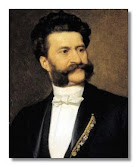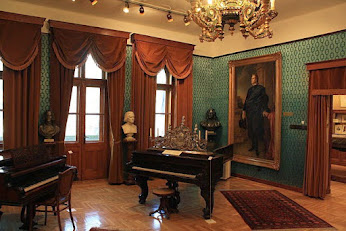The first work the Russian impresario Sergéi Diaghilev commissioned to Maurice Ravel, in 1909, suffered many production problems. So, Daphnis et Chloé was not premiered until 1912. With a lukewarm reception at the beginning, it improved substantially with subsequent performances. Diaghilev, who did not agree with Ravel's opinion that the music should be above the choreography, was nevertheless satisfied with the outcome. He insisted on the point when around 1920 he again commissioned Ravel to write the music for a new ballet.
"Vienna"
Since 1906, Ravel had been working on the idea of a waltz that would be a tribute to Strauss and Vienna. The piece, tentatively called "Vienna", was the one that Ravel adapted for the projected ballet but with a clearly different character from the original idea, because by 1920, being the war ended, Ravel had just come from fighting, precisely, to Austria. The elegant gestures of the Viennese waltz then mutated into a painting of a world that had just collapsed.
"La Valse"
This time Diaghilev rejected the work. He said it was "unreachable" and that it did look like a painting, but a painting of a ballet, not a ballet. Ravel was upset and the two artists fell out for good. The work, under the name of La Valse, was later premiered as a concert piece and in 1928 as a "choreographic poem" by the ballets of Ida Rubinstein, for whom Ravel would compose his popular Bolero that same year.
For this reason, a transcription in the opposite direction, transferring the brilliance and magnificence of the orchestra to piano solo, would seem to be unproductive. However, it is supported by two practical reasons: on the one hand, to allow the enjoyment of the piece on an intimate level, and on the other hand, to supply the need for a score that could be used for the rehearsals of choreographic groups, which is precisely the case of La Valse.
Of course, both purposes meant immediate economic benefits for the composer.
The rendition, flawless, is by the pianist Yuja Wang, born in Beijing in 1987.






















